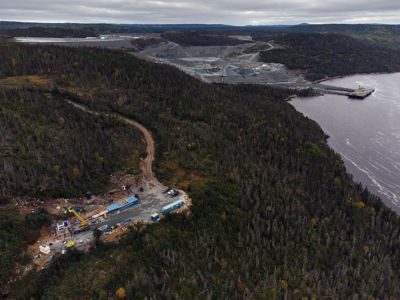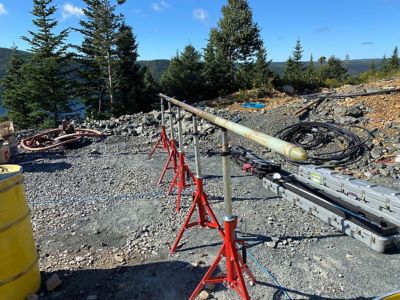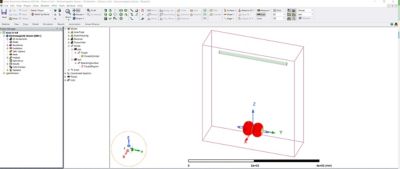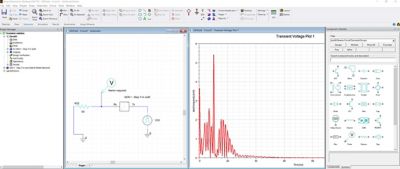-
United States -
United Kingdom -
India -
France -
Deutschland -
Italia -
日本 -
대한민국 -
中国 -
台灣
-
Ansys s'engage à préparer les étudiants d'aujourd'hui à la réussite, en leur fournissant gratuitement un logiciel de simulation.
-
Ansys s'engage à préparer les étudiants d'aujourd'hui à la réussite, en leur fournissant gratuitement un logiciel de simulation.
-
Ansys s'engage à préparer les étudiants d'aujourd'hui à la réussite, en leur fournissant gratuitement un logiciel de simulation.
-
Contactez-nous -
Carrières -
Étudiants et universitaires -
-
S'inscrire -
Déconnexion -
Espace client -
Support -
Communautés partenaires -
Contacter le service commercial
Pour les États-Unis et le Canada
+1 844.462.6797
-
ANSYS BLOG
October 3, 2023
Small But Mighty: Unlocking Narrow Vein Deposits to Fill the Metal Supply Gap
We’re 14 billion tonnes of metal short of the future we seek.
Indeed, 14 billion tonnes is the estimated shortfall in the metals1 required to make just one generation of the new technologies — batteries, smart infrastructure, and the like — that the world requires to transition to a net-zero energy future. The global mining industry is on the front lines to bridge this gap, but operators are caught between rising costs, fewer discoveries, more stringent environmental regulations, and increasing social pressures. Conventional mining depends on large deposits, where operators can leverage economies of scale to ensure that the mines remain economically viable. But this focus on large deposits skips over an estimated $6 trillion in smaller-scale deposits, often located on the periphery of existing mines. Operators often know that these “narrow vein” deposits are there, but their size and shape render them economically ill-suited to conventional extraction methods. So, they remain where they are, locked in the ground.
Novamera is changing that. The Canadian company has developed a novel suite of technologies that can precisely map and economically navigate and extract the ore in these complex deposits. Leveraging the power of high-density real-time data, as well as cutting edge hardware and software, Novamera enables an operator to extract these previously locked assets with minimal waste and minimal environmental impact. Once extraction is finished, the boreholes are backfilled, effectively erasing any sign that mining had even taken place at that spot.

Novamera mining site.
The key to Novamera’s groundbreaking technology is a proprietary Guidance Tool that produces real-time 3D lithological scans that map the precise topology of an ore deposit. Thanks to powerful simulation tools from Ansys and support from the Ansys Startup Program, though, Novamera didn’t have to break much literal ground to develop this powerful tool.
Sensitive but Tough
Novamera’s Guidance Tool is designed to integrate with an industry-standard NQ-sized core drill — the same kind of drill that geologists use to extract and analyze samples of the rock layers that lie below the surface. The Guidance Tool contains a sensitive imaging system that uses electromagnetic waves to map the ore body within a radius of 3 meters around the narrow borehole.

Novamera guidance tool
“That’s 4,900% more subsurface data than is currently available today using conventional cross-cutting holes,” notes Theresa Quick, a VP of Product Marketing at Novamera, “and that creates a three-dimensional model of the ore body, which in turn enables miners to know just where to drill to extract the ore and leave the waste behind.” Indeed, she goes on to say, not knowing precisely where to drill and how to avoid bringing up nothing but waste is one of the factors that has prevented miners from extracting the ore from these deposits in the past.
At the heart of Novamera’s Guidance Tool is an electromagnetic sensor system that produces high-resolution ore body maps. Everything from the choice of materials used to build the Guidance Tool to the tuning of the transmitters and receivers that constitute the electromagnetic guidance system itself was subject to design modification and refinement as the engineering team sought to optimize the product. The overarching challenge was to build a ground detection system that was extremely sensitive and capable of distinguishing valuable mineral content from surrounding waste and to deliver that system in a physical package tough enough to operate reliably in some of the harshest environmental conditions on earth.
“You can’t go into a commercial mining operation with a new tool unless you know it works,” says Dr. Parinaz Naseri, a Senior Hardware Design Engineer at Novamera. “But the actual mine sites are difficult to get to and expensive to access. And even if you could get on site to test each iteration of your device, you’re never going to encounter all the conditions for which you need to be prepared. Moreover, the overall performance of the electromagnetic sensor is determined by several factors, and to evaluate each of them on site would require multiple measurement setups.” Indeed, the conditions in which the device needs to work reliably may vary wildly in terms of temperature, humidity, ground moisture, soil and lithological content, and many other factors.
“So,” says Dr. Naseri, “we relied heavily on simulation to develop and optimize our Guidance Tool.”
Optimizing with Maxwell and HFSS
Ansys Maxwell and Ansys HFSS played critical roles in Dr. Naseri’s efforts. The materials in the environment — both within the tool and in the ground — refract electromagnetic waves in distinct ways, and these distinctions enable the sensors in the Guidance Tool to create a 3D image of the different materials in the area surrounding the borehole.
“But you can’t know how an electromagnetic wave is going to behave without solving Maxwell’s equations,” says Dr. Naseri “and that’s where Ansys HFSS comes in. It solves for all the elements in the Guidance Tool as well as for the environment in which it is being used.”
Dr. Naseri put multiple design instances of the tool through simulations involving many diverse types of ground conditions and mineral compositions. Each simulation helped refine the design of the tool and improve its ability to distinguish different components of the environment in which it was operating. Based on the characteristics of the refracted waves that came back, the guidance tool produces a high-resolution analysis of the physical environment in the three meters surrounding the drill hole. It shows miners the variations in the geometry of the ore body beneath the ground and identifies where valuable material can be extracted. With that insight, miners can direct their drills toward the ore and reduce waste material.
Ansys HFSS, Dr. Naseri goes on to say, supports solving Maxwell’s equations at wider ranges of frequencies than Ansys Maxwell does, and it played a key role in optimizing the antenna array that her team was building for the Guidance Tool.

As the physical design of the tool evolved, it was important to run and re-run antenna simulations to ensure that the materials used in the tool did not negatively affect the system's performance. Dr. Naseri was frequently able to draw on existing Ansys material libraries when new components were designed for the Guidance Tool, but at other times she discovered that certain materials were not in the library. Nevertheless, she remained unperturbed.
“One of the great things about HFSS is that you can create a wide range of materials to explore,” she says. “If the materials I want to include in the model are not in the existing material libraries, I'll gather information from the existing literature and from electrical and physical tests, and I’ll add those details as properties in HFSS. Ansys gives you the ability to define new materials with very complex mechanical, electrical, and electromagnetic properties. Then you can save that and use it for any simulations you need.”
With all the component materials she might need readily available, Dr. Naseri could simulate the antenna performance to see if a newly added component changed the tool’s performance. If it did, she could make refinements to the antenna design and then re-run the simulation. Most of her simulations ran for several hours on a workstation dedicated to supporting her efforts, but that time always seemed time well spent.
“We once had a physical prototype with a new component for the tool, but a change had been made in manufacturing and we wanted to know whether that change would affect the tool’s performance. We took the prototype to a testbed in the field to find out — and it took three people a full week in the field to discover that, yes, the change in the component reduced the performance of the tool. In the next round, when we had access to Ansys HFSS, it took us only hours to evaluate the impact of the material change.”


Contributing to a Net Zero Carbon Future
Novamera executives are excited about the opportunities that this new Guidance Tool presents. Mine producers have long been frustrated by their inability to unlock what have truly been considered “stranded” assets. Novamera’s surgical mining technologies may provide them with a way to quickly and sustainably add to production and meet growing demand for deposits that can’t be mined using conventional methods. “Mining companies need to find new solutions,” notes Quick. “They want the materials extracted, but they are quite aware of the rising costs — both economic and environmental. Our Guidance Tool and surgical mining technologies are just the tools to effectively address both these goals.”
Learn more about the Ansys Startup Program.
References
- Transition Metals Includes: Copper, Nickel, Lithium, Cobalt, Vanadium, Graphite required for just one generation of technology to phase out fossil fuels. Source: Simon P. Michaux, Associate Research Professor of Geometallurgy Unit Minerals Processing and Materials Research, Geological Survey of Finland, August 18, 2022 – Seminar: What Would It Take To Replace The Existing Fossil Fuel System?










